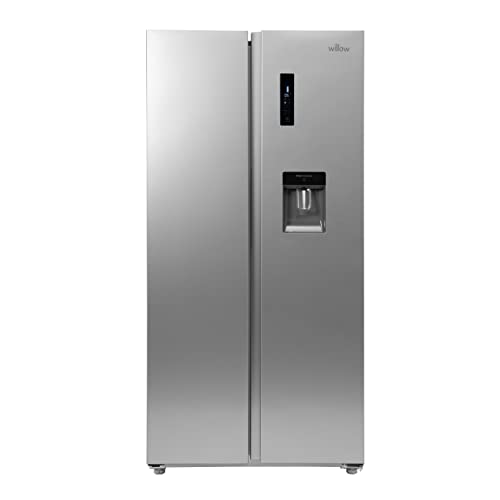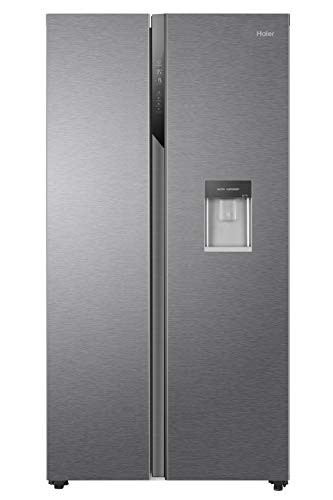5 Killer Quora Answers On Refridgerator UK
페이지 정보

본문
 The History of the Refrigerator
The History of the RefrigeratorThe traditional refrigeration of food creates a significant amount of greenhouse gas emissions resulting from refrigerant leakage and electrical power consumption. In 2019, these emissions accounted for 3.2 percent of the total UK annual territorial GHG emissions.
 The summer of 1959 was the first time fridges became a staple in British homes. Before 1959, the majority of British households relied on cold slabs kept in the pantry. They were inefficient in keeping an even temperatures and triggered a lot of food loss.
The summer of 1959 was the first time fridges became a staple in British homes. Before 1959, the majority of British households relied on cold slabs kept in the pantry. They were inefficient in keeping an even temperatures and triggered a lot of food loss.The History of Fridges In The refridgerator uk (check)
Fridges are essential kitchen appliances that allow us to keep food and drinks fresh for many days. They're also extremely energy efficient. It's easy to forget that refrigerators were once considered a luxury product. In reality it wasn't until 1950s when they began to really take off. But even then, it took a very hot summer for them to become popular in the UK.
Before refrigerators were invented, people relied on insulated iceboxes to keep their food cool. They would collect blocks of ice from lakes during the winter, and then store them throughout the warm months. However, the ice boxes were not ideal. These ice boxes were heavy and had to be carried by an "ice man". The first electric refrigerators came in 1918, but it was a while before they were widespread in homes.
Today, fridges are more efficient in terms of energy usage than they were a decade ago. They use less energy than they did 10 years ago. Some refrigerators consume only 4 kW*h of power per day (equivalent of 170 W continuously). The majority of refrigerators in the US are energy-efficient, with many being rated A+.
In the early 1950s, manufacturers began to introduce refrigerators with freezer compartments that were separate. They also began making models with a chrome finish which was very popular at the time. Since then, refrigerators are offered in many different shades and finishes. Pastel shades, like turquoise and pink, were popular in the 1960s. Earth-tone colors like almond and avocado green became more popular in the 1980s and the 1970s. By the 90s, stainless steel began to dominate.
Fridges in the 1920s
Before refrigerators, people made use of wooden covered "ice boxes" to store fresh food and drinks. The ice man would deliver blocks of ice to fill them, and they kept things cool throughout the year. These ice boxes could be found in the well-off kitchens.
In 1918, the first electric refrigerator was released. It sat atop of the existing icebox in a house. They were heavy, noisy and costly. The motor was located on top of the cabinet. They were also referred to as monitor-tops. William C. Durant bought out the Mellowes refrigerator company in 1918 and set up the Guardian Frigidaire company to mass produce refrigerators. Durant was inspired by a design developed by Cistercian monk Marcel Audiffren and Swiss engineer Albert Singrun. This was a sulfur dioxide absorption refrigerator.
In the 1920s these new refrigerators were affordable for a lot of homes. These refrigerators could hold more food and drinks and kept them cool for a longer period of time than the older ice boxes.
Advertising on refrigerators was imaginative appealing, captivating and filled with promises of ice cold drinks and fashionable designs. Vintage ads are interesting to read as they give us a glimpse of the lifestyle of the time.
At the time of the 1920s, refrigerators with electric power were commonplace in homes. Electric utilities encouraged the trend by offering rebates to those who bought refrigerators. The popularity of these appliances was even greater during the Great Depression when they were considered to be essential for the survival of a home.
Fridges in the 1950s
Fridges were still relatively rare in the 1920s but became increasingly commonplace during the 1950s. By the late 1960s they were commonplace in the majority of homes.
The majority of early fridges were utilitarian, with simple designs that matched the kitchen decor of the time. They were usually smaller fridges that sat on visible legs, with a wide variety of colors available (though they were mostly in the pastels - think mint greens). At the time there were a variety of companies manufacturing fridges which included Whirlpool (who had recently emerged as a top brand), Gibson, Hotpoint and Tappan.
All of these brands were renowned for their high-quality, reliable refrigerators. They also offered other kinds of appliances within their product range. For example, Crosley was a manufacturer of radios before moving into refrigerators in the 1940's and were renowned for their compact refrigerators that could be tucked away in smaller areas.
In the 1950s, refrigerators were more elegant and were advertised to housewives as a status sign. They were designed in a way that matched the cabinets and the walls of the kitchen and were typically white with chrome handles.
In the 1960s, fridges began to morph into gadget-oriented appliances with features like separate freezers uk and ice cube makers. Manufacturers also began to use less expensive materials, allowing them to sell their products at a lower cost.
Fridges in 1960s
Fridges finally became a staple in most households during the 1960s, with some families even having two fridges. In the 1960s, an average American fridge freezers uk sale cost $600 (roughly $7000 in 2024 dollars). At the close of the decade, prices was down to $200.
The refrigerator was a major technological advancement at the time, revolutionizing kitchens and changing the way we stored food. The fridge also improved home comfort as it helped keep meat and dairy fresher longer, which enabled people to purchase bulk quantities and cook meals in advance and put them away to be used later.
Early fridges used toxic gases such as ammonia, methyl chloride and sulfur dioxide for refrigeration but this was dangerous for humans as these gases leaked from the refrigerators. A number of people died from poisoning, and it wasn't until in 1929 that a safer method of cooling food made of carbon dioxide, was invented.
It allowed manufacturers to build more efficient and safe refrigerators that could be used in homes. Some refrigerators featured an internal freezer that could be accessed by opening the door of the refrigerator. These were called bi-door fridges and they were very popular in the 1950s and 1960s.
The 1960s refrigerators were sleeker and more futuristic. They had soft curves, and a sleek style that reflected an era of efficiency and domestic freedom. The refrigerators were still big however the boxy style of the 1940s was fading.
Refrigerators Today
The modern fridge freezer comes in a variety of styles, colors and finishes that can be adapted to your individual tastes and kitchen decors. Some offer smart features that connect to Wi-Fi, providing a speedy way to customize the settings, and some come with a built-in camera that allows checking inside your refrigerator from anywhere.
French door models dominate the market, as consumers seek modern features and designs, such as dispensers of ice or water and flexible drawers. In certain instances, smart screens are also included. Many of these appliances are classified as A B, C or even A+ for energy efficiency, following the revamping of the mandatory labelling system in UK appliances.
This Hotpoint model is a favorite because of its sleek design. It features an innovative UVNano self-sterilising technology that kills bacteria in the fridge. Additionally, it comes with two salad drawers with adjustable humidity sliders. It's also spacious, with plenty of storage room for bottles and jars as well as a spacious utility box in the door of the fridge freezers uk.
Refrigerators that don't include an ice tray of the traditional type can consume up to four times more energy than models that do, so look for models that have an eco-friendly ICE+ option that uses less energy. You can also save money by choosing a model that has an automatic ice maker. This will ensure an unending supply of ice ready to use in the morning.
The best thing you can do to protect the environment is to buy refrigerators that have an energy efficiency rating of A or A+. It's also a good idea to consider the fridge freezer in uk's annual energy consumption as part of your budget for household appliances when choosing an appliance. It's important to remember that the world is not a place where we can afford to take energy for granted. Everyone deserves access to reliable, affordable and abundant electricity to live a healthy, comfortable life and safeguard our planet.
- 이전글What's The Current Job Market For Indoor Wood Burning Stove Professionals? 24.12.05
- 다음글15 Gifts For The Asbestos Attorney Lover In Your Life 24.12.05
댓글목록
등록된 댓글이 없습니다.

